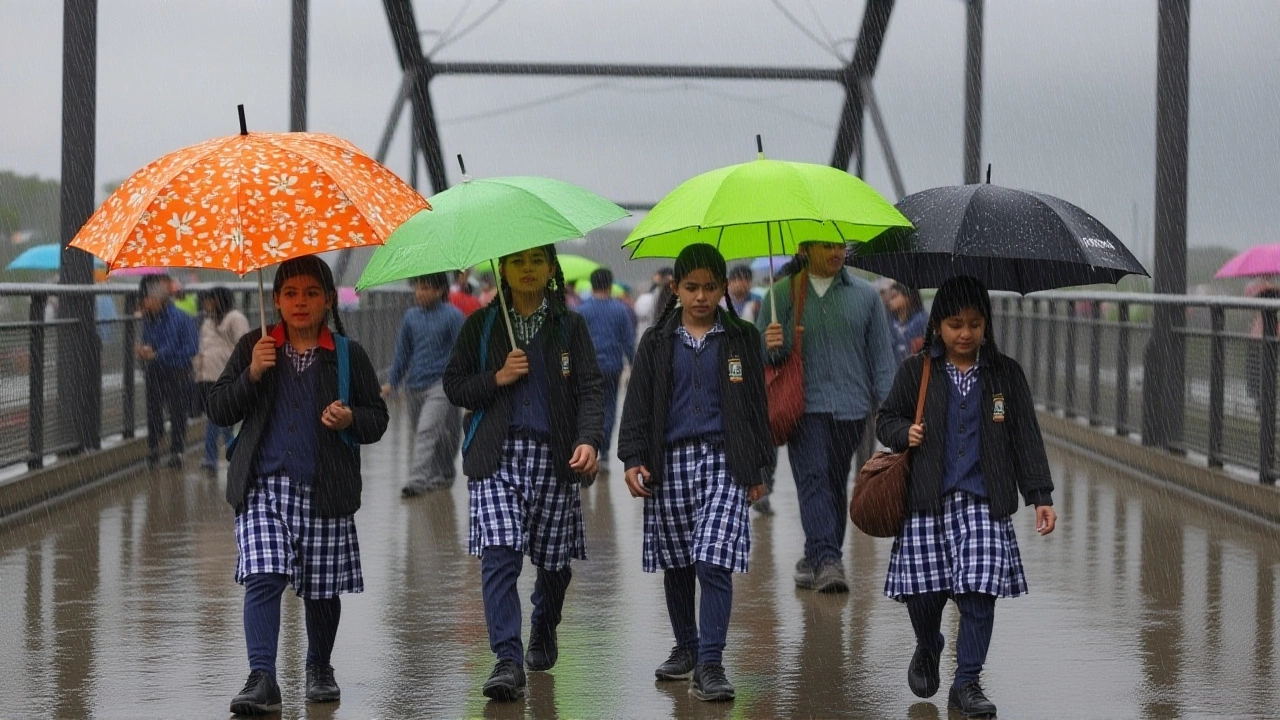India Meteorological Department: Weather Insights That Impact Your World
When you talk about India Meteorological Department, the government agency that monitors weather, climate and provides forecasts across the country. Also known as IMD, it issues warnings, supports agriculture, aviation and disaster response. The agency isn’t just a source of daily temperature updates; it’s a backbone for decisions in many sectors. From farmers planning sowing dates to businesses setting production schedules, IMD’s data feeds into real‑world actions that affect livelihoods.
One of the core services IMD offers is weather forecasting, the process of predicting atmospheric conditions using satellite imagery, radar, and ground observations. Accurate forecasts help logistics firms route trucks, airlines adjust flight plans, and event organizers decide whether to move a concert indoors. When a forecast predicts heavy rain in a city, construction sites may pause work, which in turn slows hiring for temporary labor. That ripple effect shows why a simple rainfall prediction can indirectly shape job trends.
Another pillar of IMD’s work is monsoon predictions, seasonal outlooks that estimate the timing and intensity of the Indian monsoon. The monsoon drives agricultural output, and that output determines demand for farmhands, seasonal contractors, and even transport drivers who move produce to markets. A below‑average monsoon often triggers government relief schemes, such as scholarships for students from affected regions, similar to the Azim Premji Foundation initiative that supports girls in Chhattisgarh. Climate data therefore connects directly to education funding and job creation in rural areas.
How IMD Data Touches Everyday Topics
Beyond farming, climate information influences the auto market. For instance, GST rate changes on vehicles—something a recent post highlighted—are affected by economic forecasts that factor in seasonal demand spikes after a good monsoon. When farmers have a bountiful harvest, they tend to spend more on farm equipment and personal vehicles, prompting manufacturers like Mahindra to anticipate higher sales. IMD’s seasonal outlooks become a silent player in those pricing strategies.
Job portals also feel the weather’s sway. A surge in call‑center hiring in Canada, another article noted, often aligns with holiday seasons that differ from Indian festivals. IMD’s time‑zone‑aware forecasts help global companies schedule offshore support when local teams face extreme heat or monsoon outages. Similarly, data‑entry firms rely on stable internet connectivity, which can be disrupted during severe weather warnings issued by IMD. Understanding when and where outages may occur helps companies plan remote work policies and keep productivity steady.
Disaster management is perhaps the most visible link between IMD and public safety. When cyclones approach the coast, the department’s early warnings give authorities time to mobilize rescue teams, set up temporary shelters, and allocate emergency funds. Those actions create short‑term employment for volunteers, medical staff, and logistics crews. In turn, the influx of temporary jobs can boost local economies, a pattern seen after major storms in the past decade.
Even entertainment news—like the recent stories about Bollywood stars—tends to echo seasonal trends. Film shoots often pause during the monsoon to avoid equipment damage, leading to delays in production schedules. Those delays affect crew hiring, location rentals, and post‑production timelines. While the connection may seem indirect, the underlying weather data from IMD is the common thread that dictates when a set can roll.
Climate data isn’t limited to immediate forecasts; it also feeds long‑term planning. Government scholarships, such as the one mentioned for girls in Chhattisgarh, are designed with climate‑resilient education in mind. By forecasting water scarcity or flood‑prone zones, IMD helps policymakers target regions where education can break the cycle of climate vulnerability. This strategic use of climate data shows how a weather agency can shape social initiatives.
For job seekers, keeping an eye on IMD updates can be a smart move. Seasonal hiring spikes often follow a clear forecast—think of increased demand for construction workers after a dry spell, or a rise in retail staff during festive periods when forecasts predict pleasant weather for shopping festivals. By aligning your job search with these patterns, you can time applications to when employers are most active.
In short, the India Meteorological Department is more than a weather reporter; it’s a data engine that powers decisions across industries, education, and employment. The posts you’ll explore below reflect that breadth—from scholarship launches and car price debates to job‑portal trends and entertainment updates. Each article shows a piece of how weather and climate shape everyday choices.
Ready to see how these themes play out in real stories? Dive into the collection below and discover the practical impact of weather on jobs, prices, and life in India.
Cyclone Montha Hits Andhra Coast as India Braces for Nationwide Floods and Heavy Rain
Cyclone Montha intensified into a severe storm heading for Andhra Pradesh, triggering nationwide heavy rainfall alerts from October 27–31, 2025. IMD warned of flooding, landslides, and urban chaos across 12 states, with riverine risks in Bihar and West Bengal.
Chennai Braces for Moderate Rain and Lightning as Northeast Monsoon Kicks Off Oct 16, 2025
Chennai faces moderate rain, thunderstorms and good air quality on Oct 16, 2025 as IMD signals the start of the Northeast Monsoon, prompting residents to prep for wet conditions and possible floods.






